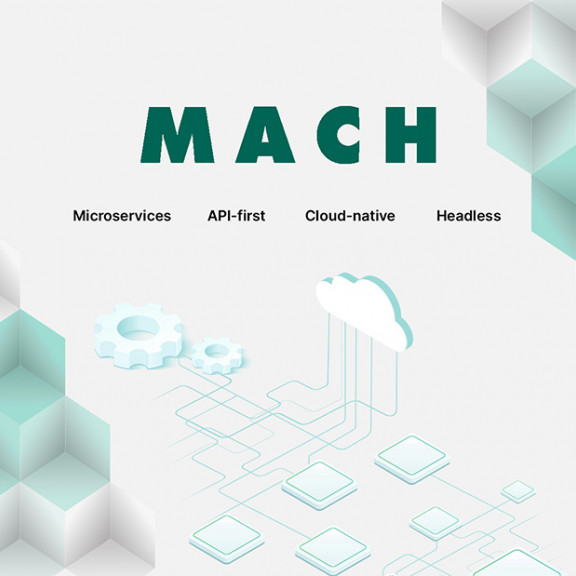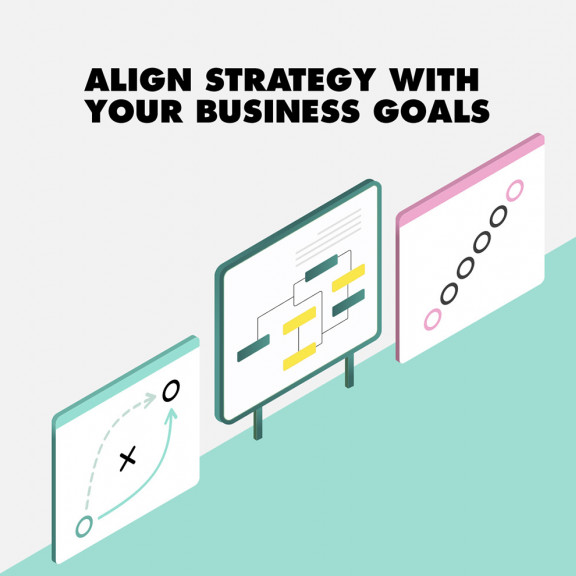
Composable Commerce
Customer expectations today are more demanding than ever as consumers expect fast, personalized, and seamless experiences across all channels every time they interact with a brand.
As a result, retailers are under pressure to keep up. However, adapting to constant change is challenging for digital merchants often restricted by legacy platforms with little room for agility and flexibility. Fortunately, the technology landscape has caught up over the past few years to address these expectations, and this is where composable commerce comes into play.
What is Composable Commerce?
Composable commerce is an architectural approach to building digital experiences piece by piece. It can be compared to using a set of Lego, where each brick has a different digital ability and can be moved around and re-configured on a continuous basis to meet different business needs. This means that the architecture you create today might look totally different in a year’s time as you grow and tailor the pieces to deliver what matters to your customers.
It’s all about giving brands the possibility to quickly change their tech stack based on their requirements. Some of the world’s tech leaders, such as Netflix and Amazon, have built their business based on a composable platform, enabling them to stay one step ahead of the competition.
“One of the most exciting things about a composable architecture is how much quicker you can continue to innovate and evolve it. Your engineering teams will be able to leverage the latest technologies and development practices. Done right, this makes things like weekly or even daily releases a very real target.”
Why choose Composable Commerce?
Making the move to composable gives businesses a more agile approach to their ecommerce operations, allowing them to keep up with today’s fast-paced and ever-changing digital environment.
The Benefits of composable commerce
The are many reasons why merchants choose to migrate to composable commerce. The main ones are:
One of the main benefits of composable commerce is a tailored Customer Experience (CX) that focuses on what is important to your customers. By combining different components, merchants can tailor the experience to what really matters to their customers. For example, you can use a CDP module to drive personalization in a seamless manner to a website, mobile app, watch, or even the Metaverse. Or if you have a complex product catalog, using an AI-driven search platform will guide users to the right products regardless of their digital touchpoint.
Composable commerce architecture fosters a spirit of innovation, allowing you to release more frequently, leverage more of your data and launch new channels quickly. And it means you are less tied into the rules associated with large monolithic platforms that require larger release and testing cycles.
A composable approach lets you innovate in your tech stack without impacting the rest of your platform; unlike monolith solutions where innovation on one component has a knock-on effect everywhere else. For example, as the frontend is decoupled from the backend you can release new frontend updates that don’t have any impact on the backend systems, thus allowing you to release more confidently, with less risk and more frequently.
Composable commerce helps digital retailers to be more cost-effective. Modern SaaS platforms and cloud technologies have very transparent pricing, and you can also focus your spending on the components that make the biggest difference. For example, you may not require a promotion engine but it’s far more valuable for your customers to have a best-in-class search and browse experience, in which case you can focus your spending on a better search component. This is different to a monolithic platform where you are paying for everything regardless of how relevant it is to your customers.
Furthermore, thanks to cloud solutions, often you only pay for what you use. For example, when you have heavy traffic on your site, you pay for what you need and pay less when it’s quieter. Furthermore, you can reduce the reliance on single vendors and the risk of vendor lock-in.
Enterprises that choose composable commerce benefit from many operational efficiencies compared to those running monolithic applications.
Because components are decoupled, large teams can work in parallel on different areas of the customer experience. With monolithic applications these teams can often be restricted by everyone on the same code base and having tightly coupled dependencies.
Modern technologies and API-first architecture support better automation and tools. They can be leveraged to reduce release cycles, decrease manual effort and increase quality. All of this contributes to quicker innovation together with happy engineering and product teams!
MACH certified SaaS platforms also remove the headache of scaling, security, support and much more. They are trusted to provide all of this for you ‘out of the box’ and therefore reduce the burden on internal teams.
A modern tech stack impacts the people that are working on it, allowing teams to grow. People do not enjoy being left behind to work on legacy issues and it can be very difficult to hire specialist engineers with experience in legacy monolithic applications. Teams are generally much happier and get excited when they can learn new technologies and tools. Composable commerce makes this possible, increasing employee engagement and helping you to recruit and retain talent.
Composable is about setting yourself up to keep evolving and moving forward to keep pace with customers’ expectations. By splitting the architecture into components and microservices you can change and improve capability as you need to. Also, as there is no “big bang” re-platform or upgrades involved in a composable stack, this saves you time and minimizes technical debt.
While composable commerce offers many benefits, it is important to bear in mind that it does come with some challenges. Integration can be complex when dealing with legacy systems. Additionally ensuring different vendors adhere to industry standards, and dealing with data privacy issues can be time-consuming. However, despite these challenges, the benefits of composable commerce for enterprises is very clear and many are already on the journey to this new approach.
How to get started with Composable Commerce?
Getting started with composable commerce involves working closely with a wide range of experts and requires you to:

Composable or not composable?
Is composable commerce the best approach for your business? Get your copy of our latest ebook to learn more.
The key success factors of a Composable Commerce Approach
Getting ready for a move to composable commerce involves understanding how a digital-first company works. This means you need to give a lot of thought to:
The key driver behind the success of a composable commerce solution is the customer. Putting the customer at the center of everything you do will ensure everyone adopts a mindset that thinks about the customer’s ultimate desire, as opposed to what a particular platform can do or limitations in legacy technology.
As composable is not an out-of-the box solution, everything is all split up. This means you need to look wider than before. Take for example a luxury brand that isn’t focusing on discounts. It won’t require a composable commerce platform with a strong promotions engine. However, it will need to focus on investing in amazing content and personalization.
Migrating to composable is best done in stages. It should not be seen as a “Big Bang” where you lift out one solution and replace it with another one. It is best to consider it as an iterative cycle of peeling things away.
Take time to get the foundations right. The more agility and automation you can build into architecture, the quicker you can move. For example, ensuring you have the right ‘playground’ environment, where you can trial different components to rapidly gain feedback from customers and business teams, can keep you moving at pace and in the right direction.
When moving to composable it is important not to lose sight of the operational benefits and use this as an opportunity to transform how your engineering, product and tech functions work around your business.
Ensure that these operational benefits are part of the business case for composable commerce and that the focus is on achieving these results.
“Doing composable commerce well is all about setting yourself up to be truly digital focused. It’s about putting the customer at the heart of everything you do and asking what experience they expect now and in the future. You should approach it from that angle and then compose the best technology stack to deliver and keep pace. Remember you are building the optimal digital commerce experience not implementing a platform.”
We work closely with trustworthy composable commerce partners to provide you with a solution that is best suited to your needs, enabling you to deliver the best digital experiences to your customers.
To sum up
Going on a composable journey gives you better control over your e-commerce platform along with the ability to adapt to change in market conditions quickly. It is a perfect way to future-proof your business if you are operating in a complex and tech-focused environment requiring agility and flexibility.
However, it does require a change in mindset, a high level of technical expertise and can be a significant financial investment. In short it needs to be well planned and seen as a digital transformation not just a replacement of a commerce platform.
This may not be the best choice for every business such as smaller organizations, with relatively simple business needs, who are more suited to an out-of-the box solution.
Therefore, the best thing to do, before deciding which approach is right for your organization, is undergo a full audit of your existing set up. The recommendations made will be based on a careful assessment of your business goals, technical capabilities and market needs.













